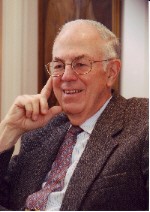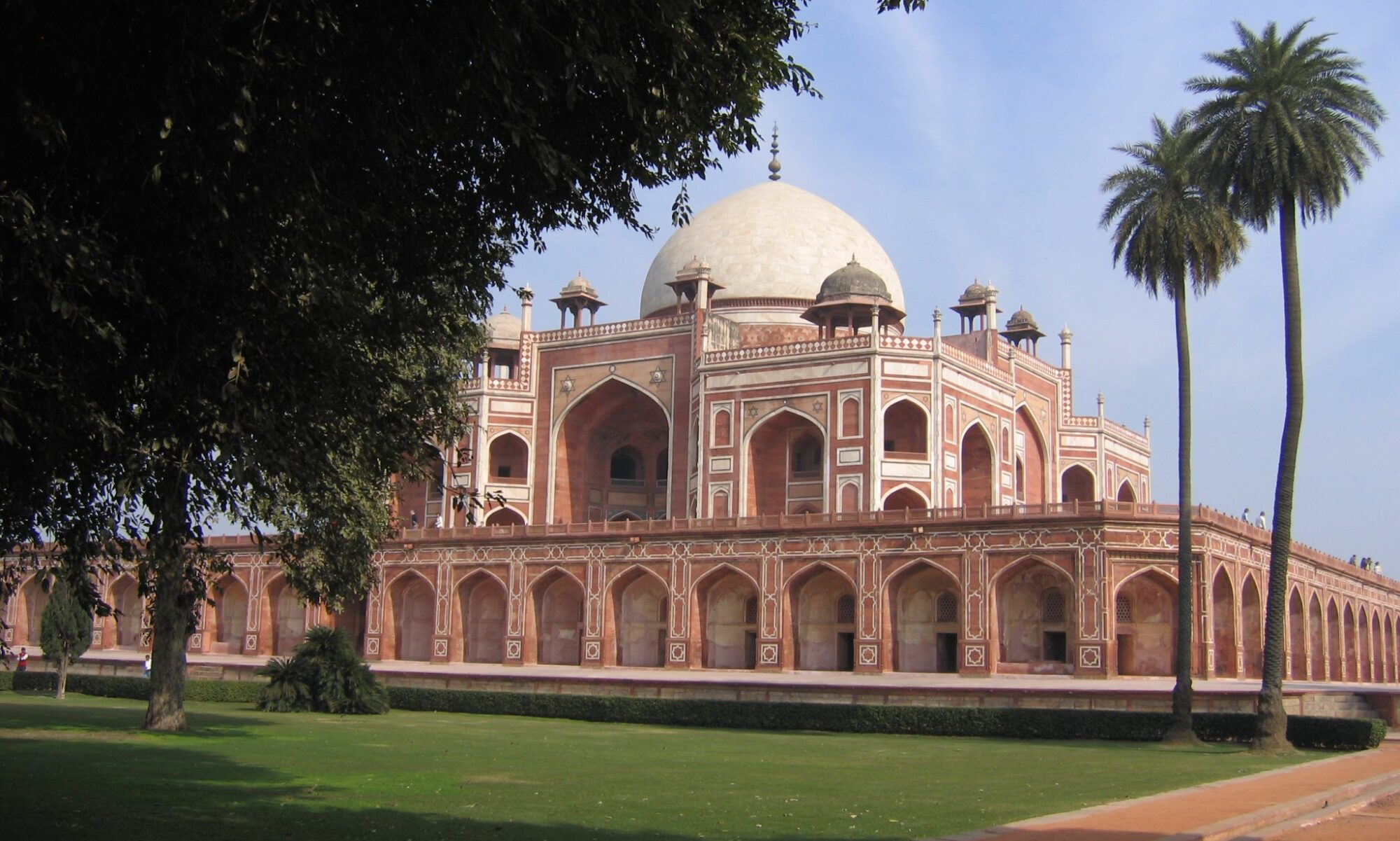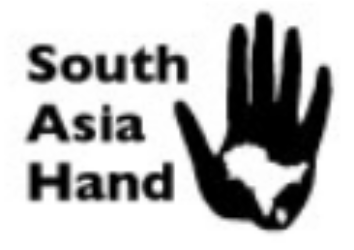
March 10, 2016: When Hal Saunders died last weekend, the world lost one of the most creative peace negotiators it has ever known. He is best remembered as the man who gave Jimmy Carter’s vision of an Israel-Egypt peace practical form at Camp David. Having worked for him both during and after his distinguished government career, we think it’s important to highlight two other characteristics that have been lost in most of the early remembrances. First, Hal was an extraordinary boss and colleague. Second, his government career – a couple of decades at the top of the official pyramid – was only the beginning of his contribution to both understanding and doing peacemaking.
We worked directly for Hal during the last half of his time as Assistant Secretary of State for the Near East and South Asia, Howie as country director for India, Tezi as deputy director of the Pakistan desk. A Civil Service official, he won enormous respect from the many Foreign Service officers who worked with him at State. They recognized him as a master of their craft. A number of them have commented that he would have been a superb ambassador had he chosen that diplomatic path. Two stories from the grueling days around the Soviet invasion of Afghanistan on Christmas Day 1979 show Hal as the manager and inspiration for his State Department colleagues.
The first took place while the invasion was still taking place. Hal agreed to give a short briefing to a group of journalists. By the time of the briefing, it was clear that an invasion was under way, but there were far more questions than answers about the specifics and numbers involved. Everyone was exhausted, starting of course with Hal. One of the journalists was trying to get a fix on the number of troops involved, and rather testily pressed for a specific number (without too many zeroes at the end) of Russian troops. Hal came back with the best information he had – “about 80,000” – which had entirely too many zeroes for his interlocutor. They went back and forth a couple of times. Finally, on about the third pass, Hal said, in a low and almost uninflected voice, “I answered that question twice, and if you ask it again, I’ll give you the same answer.” That was as close as either of us ever came to hearing him raise his voice. In a job that had more than its share of frustrations, and in a career where he worked intimately with people famous for raising theirs (Joe Sisco and Henry Kissinger come to mind), Hal was the quiet man.
The second episode shone a light on the work habits of the State Department. It was perhaps a week or two after the invasion, and Hal was preparing to testify before a Congressional committee. Someone – in this case Tezi – was tasked to produce the first draft of the testimony, and have it ready to discuss at an “all hands” meeting in his office at the end of the day. The draft was done; it was, as often happens, a bit of a hodge-podge of everything that wasn’t actually dangerous for him to say. We all trooped into his office. Hal had the draft face down on his lap. After greeting his minions, he said, without turning the paper over, “Now, what do we really want to say?” We came to think of this fundamental but amazingly often forgotten maxim as “The Saunders Rule.” Forget cranking out whatever comes to hand: zero in on one key point, cogently argued and expressed. He got it, too – quietly. He dealt with his part of the bureaucracy by inspiring it to rise to a high standard, and by treating subordinates as colleagues.
Hal Saunders’ post-government career has barely figured in the obits that came out right after he died, but the zeal and skill with which he went into the difficult field of non-official peacemaking is if anything even more remarkable than what he did in government. Having road-tested his peacemaking skills in the toughest of environments, he gave his technique a name – Sustained Dialogue – and founded an institute dedicated to putting it into practice. The core concept was developing new and more constructive relationships among the parties to a conflict, having them work together to unpack the historical and cultural narratives they brought to the table, and using the results of this effort as the foundation for moving toward peace.
Hal sought out some equally tough places, this time without the pomp and power that go with high positions in the U.S. government. He went off to Tajikistan and, working with academic and ex-government colleagues, worked to create dialogue among people who were barely on speaking terms. He came out to Sri Lanka while Tezi was ambassador there, to share his experience in what was then the scene of a nasty frozen conflict. He did that without preaching, and always with his trademark understatement. He didn’t give answers: he posed questions, encouraging his interlocutors to find their own answers.
The longest-running show in his three and a half decades of non-official sustained dialogue was the U.S.-Russian engagement known as the Dartmouth Conference. From 1960 until the present, groups of Russians and Americans had met a couple of times a year: former officials, academics, think tank people, brought together by their serious interest in U.S.-Russian relations or in the issues that have sparked either cooperation or trouble between these two countries through the years. Hal co-chaired the group for a bout thirty years with a Russian colleague. On three occasions, he asked Tezi to join the group, to participate in discussions about Pakistan and Afghanistan. The conversation was a testament to the power of personal relationships slowly and carefully built up, and to the quality of understanding and even cooperation that can take shape in such a setting. The friendship and respect between the American and Russian participants – and specifically between Hal and his Russian counterparts – did not eliminate serious disagreements, but did make it possible to discuss them in a frank and sophisticated fashion.
The last session that Tezi participated in took place in July 2015, in the shadow of the Russian invasion of Ukraine. The discussion of Afghanistan was illuminating for both sides; the conversation on Ukraine laid bare the deep chasm between the perceptions of the two sides. For an old diplomat and student of diplomacy, it was inspiring to see Hal, by then already in frail health, still looking for new ways to build bridges of communication in spite of serious differences.
We will miss this gentle giant of diplomacy.
Teresita and Howard Schaffer


Howie/Tezi: Missed the obit and TNX for the info. I first “met” Hal as his DIA counterpart during his incumbency at the Agency. We conversed daily by “red phone” though never met face-to-face. I was [as you are well-aware] his Pol/Mil Advisor during much of his stint as AsstSec for NEA. As recently as last fall, Hal and Nick V went to Moscow for meetings together. The great ones are disappearing, as you indicated.
Wonderful and necessary addenda to otherwise good press coverage. I hope someone does a serious biography of Hal, telling a larger story at the same time–how those in government can achieve important positive policy goals. I had occasion to consult with him irregularly, and always came away both better informed and inspired. Such a biography would also note those bad ideas that he stopped!!
Tezi and Howie,
A great piece on Hal. I knew him only briefly while I was posted in Washington and was impressed with his thoughtfulness and modesty. And found him very respectful of others.
I am going to share your piece with my students.
Foreign Service colleague and retired Ambassador Tom Boyatt asked me to post this comment on his behalf:
Dear Howie and Tezi,
Thank you for your wonderful piece on Hal Saunders. I want to share with you an anecdote about his life.
In the first half of 1957 Harry (as he was called in the military) and I were classmates in the Air Force Officer Candidate School. In those days Air Force OCS was composed almost exclusively of “mustangs,” sergeants who aspired to becoming officers. The first three months we were all “second class” and for the last three months we were “first class” and all had cadet ranks. First class ran the barracks and all formations and second class was subjected to serious pressure and hazing to be sure they really wanted to be officers. The SIE (self initiated elimination) rate was over 30%.
You can be sure the former sergeants were dedicated to causing the college boys to SIE. There were two Princeton Tigers (Hal & myself) and two Yalies and eight in all.;. We received their particular attention. Conjure in your minds gentle Hal with a mean old sergeant in his face shouting at him and giving him demerits (which meant marching the square on weekends, or waking him up in the middle of the night to chase cockroaches or some such, or eating square meal (eyes straight ahead and getting the food in at 90 degree angles. It was like waves washing against a rock, and Hal was the gentle rock. He never once wavered from what he was, a gentleman who became an officer.
By the way, all the “college boys” made it and several were distinguished graduates and offered regular commissions.
Cheers,
Tom